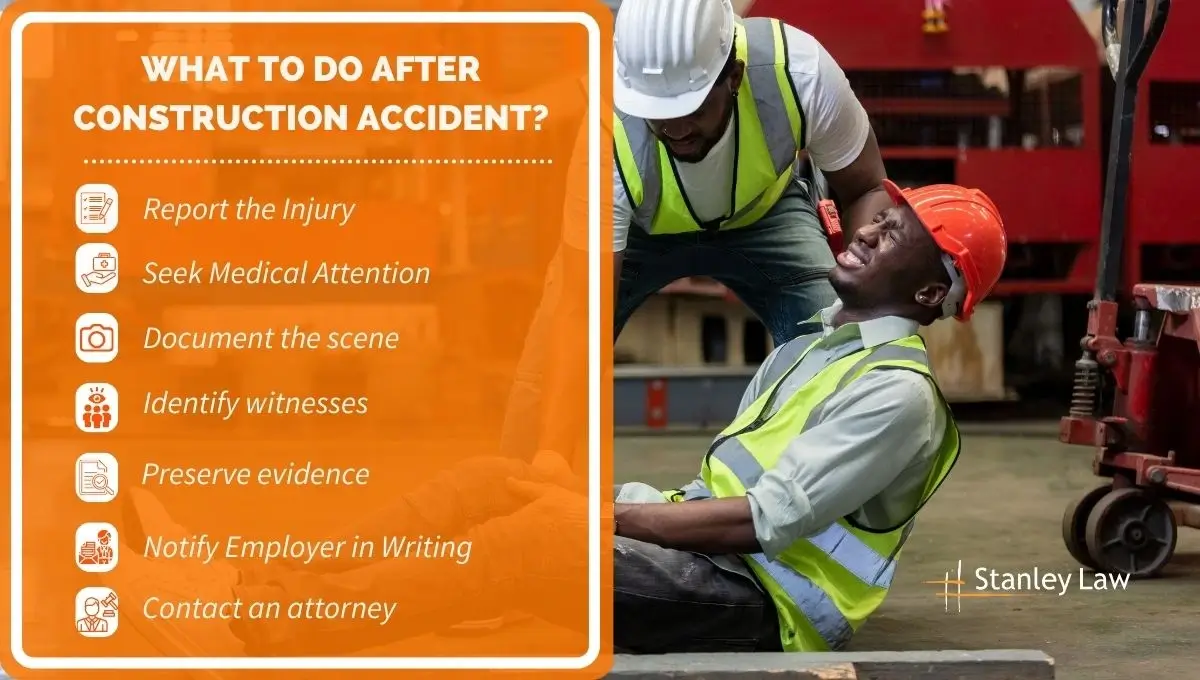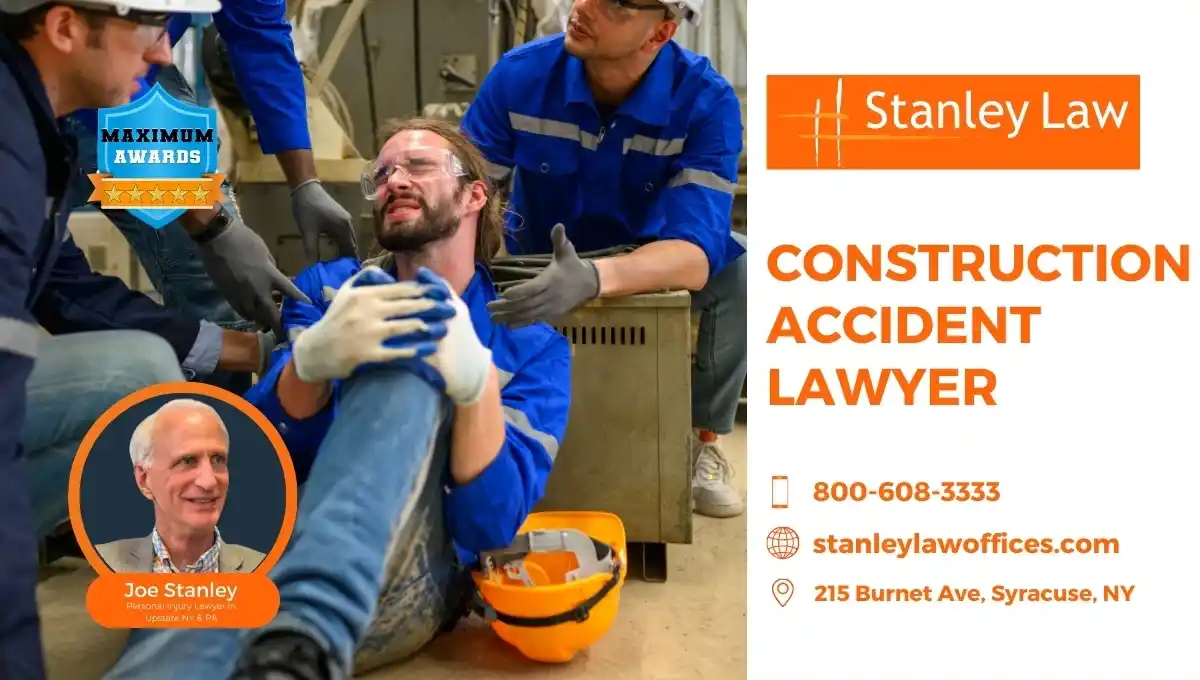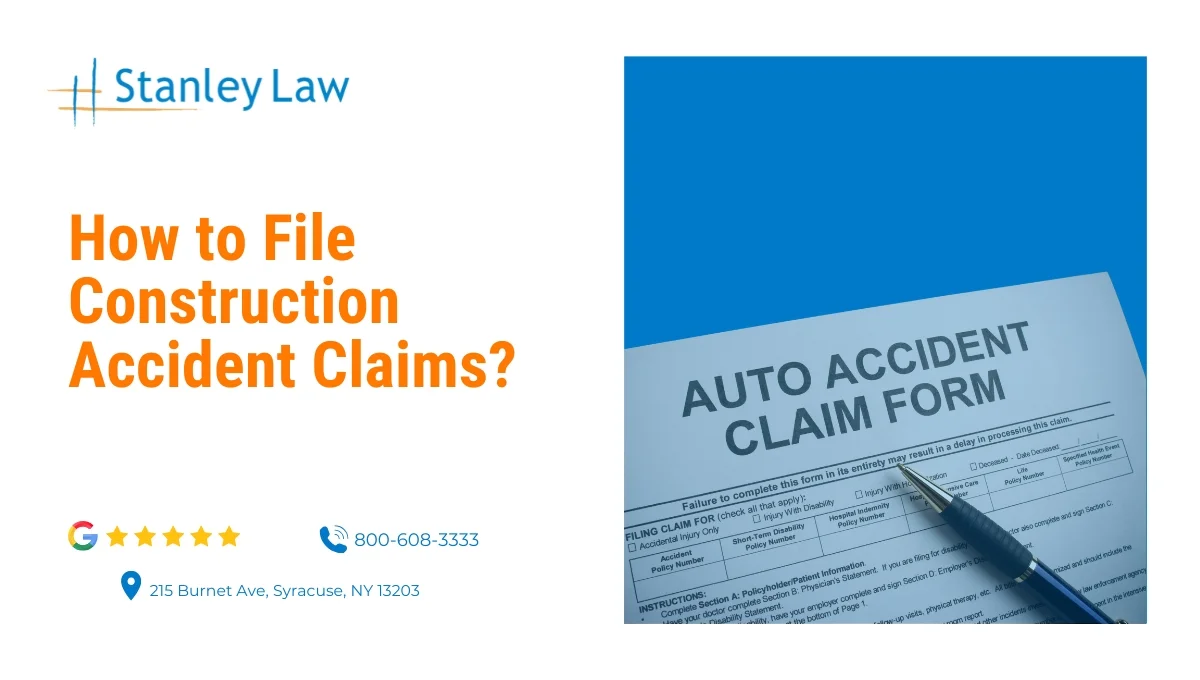An injury on a construction site can be physically and financially devastating. You’re not alone if you’re grappling with managing medical bills, lost wages, and legal procedures. Filing construction accident claims might seem daunting, especially when you’re in recovery. This guide simplifies the process, helping you understand your legal rights and the actions you need to take to file a claim effectively. Let’s get started!
Who Can Be Held Liable in a Construction Accident?
Multiple parties may be responsible for construction accident injuries. Determining who is liable is crucial for the success of your claim. It depends on the role each party plays in ensuring site safety.
Employer
Employers are required to provide a safe working environment. In New York, workers’ compensation is available without the need to prove fault. However, you may have additional claims if employers violate safety regulations or don’t address dangerous conditions.
Property Owners
Property owners must maintain safe premises. If an accident results from their failure to correct known hazards, they could be held liable for the injuries incurred.
General Contractors or Subcontractors
Contractors and subcontractors must ensure safety on site. They can be liable if they neglect these standards, fail to follow safety protocols or provide proper equipment, leading to preventable accidents.
Equipment Manufacturers
Equipment manufacturers can be liable if defective machinery causes injury. For example, injuries from a malfunctioning crane due to faulty brakes could lead to a claim against the manufacturer.
Common Causes of Construction Accidents
Construction sites are inherently hazardous environments. By identifying and addressing common accident causes, we can significantly reduce the risk of workplace injuries and fatalities.
Falls from Heights
Falls from heights, such as scaffolding, ladders, or rooftops, are a major safety concern on construction sites. Using faulty equipment, working on unstable surfaces, or neglecting safety gear can lead to severe injuries, such as broken bones or head trauma.
Falling Objects
Unsafe tools, materials, or equipment can fall from above, putting workers below at risk. Even with hard hats, falling objects can cause severe head, neck, or back injuries. Ensuring the safe fastening of tools or equipment can prevent such accidents.
Equipment Malfunctions
Faulty or improperly maintained machinery can lead to accidents, highlighting the importance of regular checks and proper operation training.
Electrical Hazards
Exposed or faulty wiring and unsafe work near power lines are serious risks that can lead to electrocution or burns, necessitating stringent safety practices.
Steps to Take After a Construction Accident
Knowing how to respond after a construction accident can greatly affect your recovery and chances of receiving compensation. Taking the right steps right away helps protect your health and legal rights.
Seek Medical Attention
Prioritize your health and get immediate medical treatment, even for minor injuries. Documented medical reports are essential for supporting your claim.
Report the Incident
Report the incident to your supervisor immediately for official records. Notifying them about your injury is crucial for initiating a worker’s compensation claim and subsequent legal actions in New York.
Document the Scene
If possible, collect evidence at the scene. Take photographs, gather witness accounts, and obtain a copy of the accident report. These details can help support your claim, prove what happened, and determine liability.
Contact a Construction Accident Lawyer
After addressing your immediate needs, consult with a construction site accident lawyer. An experienced attorney can advise you on your next steps, assist with your worker’s compensation claim, and determine if additional legal action is necessary.

Legal Options for Construction Accident Victims
Understanding your legal options after a construction accident is crucial for obtaining fair compensation. Each option has specific steps; carefully following them will help your claim proceed smoothly.
Workers’ Compensation
Workers’ compensation typically covers medical costs, lost wages, and rehabilitation. Here’s how to proceed:
Step 1: Report the Accident
Notify your employer immediately to begin the claim process.
Step 2: File Your Claim
Submit the claim form to your employer and the New York Workers’ Compensation Board.
Step 3: Seek Medical Attention
Visit a doctor approved by the Workers’ Compensation Board.
Step 4: Receive Your Benefits
Once approved, you’ll receive medical costs, lost wages, and rehabilitation benefits.
Third-Party Claims
If others besides your employer are responsible, consider a third-party claim:
Step 1: Identify the Responsible Party
Determine who else might be liable for the accident—a contractor, property owner, or equipment manufacturer.
Step 2: Engage a Lawyer
Consult a construction accident lawyer to help build your case and handle the legal process.
Step 3: File a Third-Party Lawsuit
Initiate a lawsuit to seek damages not covered by workers’ compensation.
Step 4: Collect Evidence
Gather and present evidence in court to support your claim.
Personal Injury Lawsuits
Pursue a personal injury lawsuit if negligence played a role:
Step 1: Consult an Attorney
Consult a lawyer to discuss the negligence and validity of your case.
Step 2: File the Lawsuit
Submit your legal claim against the negligent party.
Step 3: Prove Negligence
Collect solid evidence proving the other party’s negligence.
Step 4: Pursue Compensation
Seek full compensation for all related losses, both financial and personal.
The Role of a Construction Accident Lawyer
A construction accident lawyer is essential for helping you get compensated by managing the legal details. From gathering evidence to advocating for your rights, having an experienced attorney can make a big difference.
Investigating the Case
A thorough investigation lays the foundation of a successful claim. A skilled lawyer will:
- Gather Evidence: Collect photos, safety reports, and witnesses to determine what caused the accident.
- Consult Experts: Work with safety experts and medical professionals to analyze the site and understand the full scope of injuries.
- Identify Liable Parties: Determine who is responsible for the accident.
This thorough investigation ensures that every detail is documented and ready for court.
Negotiating Settlements
Working through negotiations with insurance companies and responsible parties is important. Your lawyer will:
- Evaluate Damages: Calculate your losses accurately.
- Handle Communication: Manage all discussions with insurers to prevent any tactics that may undervalue your claim.
- Secure Fair Settlements: Negotiate for a fair settlement.
With a lawyer’s negotiation skills, you’re more likely to receive the compensation you deserve.
Litigation Support
Your case may go to court if it doesn’t reach a fair settlement. Your lawyer will:
- Prepare Legal Documents: File necessary paperwork.
- Represent You in Court: Present evidence, call witnesses, and argue your case before the judge or jury.
- Maximize Compensation: Use their legal expertise to fight for a fair verdict.
An experienced attorney can guide you through the next steps, assist with your workers’ compensation claim, and determine if additional legal action is necessary.
If you’re recovering from a construction site injury in New York, having an experienced New York construction accident attorney to navigate the legal process is crucial. Stanley Law Offices, with offices across New York, is here to provide expert legal guidance. We serve victims of construction accidents throughout the state, including:
- Syracuse construction accident lawyer
- Rochester construction accident lawyer
- Binghamton construction accident lawyer
- Watertown construction accident lawyer
- Oneonta construction accident lawyer
Contact us today to ensure your case is handled with the expertise it deserves.
Types of Compensation in Construction Accident Claims
When pursuing a claim for a construction accident, you may be entitled to various types of compensation that address the economic and personal impacts of your injuries.
Economic Damages
These losses are quantifiable and directly attributable to the accident:
- Medical Expenses: Covers all medical treatments, from emergency care to long-term therapy.
- Lost Wages: Compensates for the income lost during your recovery period.
- Rehabilitation Costs: Covers physical therapy, home care, or medical equipment costs.
Non-economic Damages
These damages compensate for the more intangible losses you’ve suffered:
- Pain and Suffering: Compensates the physical pain and emotional distress endured.
- Loss of Enjoyment of Life: Compensates the inability to partake in hobbies and activities you once enjoyed.
- Emotional Distress: Covers cost for mental anguish, such as anxiety or depression.
Punitive Damages
The law may award punitive damages to the responsible party in case of extreme carelessness or intentional misconduct. These damages are not tied to specific losses but intend to punish the wrongdoer and deter similar conduct in the future rather than directly compensate the injured worker.
Statute of Limitations for Construction Accident Claims in New York
The statute of limitations sets the deadline for filing a claim after a construction accident. If you miss this deadline, you may forfeit your right to compensation. So, it’s important to know these time limits.
Filing Deadlines
- Workers’ Compensation Claims: Injured workers must notify their employer within 30 days of the accident and file claims within two years from the accident date.
- Personal Injury Lawsuits: You generally have three years from the accident date to initiate a lawsuit.
These deadlines are strict, and failing to meet them can result in dismissal of your claim.
Exceptions to the Statute of Limitations
While deadlines are generally strict, certain conditions can extend these deadlines:
- Discovery of Injury: If an injury isn’t immediately visible (like exposure to hazardous substances), the time limit begins when you discover the injury, not when the accident happened.
- Minors: If the injured party is a minor, the court may extend the deadline until they turn 18. After that, they typically have the full time (e.g., 3 years) to file a claim.
- Mental Incapacity: If the victim is incapacitated, the statute pauses until they regain capacity.
- Example: A construction worker with a traumatic brain injury in a coma would have the statute of limitations paused until they recover and can make legal decisions.
Knowing these rules and quickly getting legal help ensures you don’t lose your right to seek compensation.
Why Choose Stanley Law Offices?
Choosing the right legal representation after a construction accident can make all the difference in your case. Here’s why Stanley Law Office is the right choice:
- Proven Track Record: We have a proven record of winning big settlements for injured workers in New York.
- Extensive Experience: With 90+ years of combined legal experience, we understand the law well and know how to build a strong case.
- Compassionate Approach: We treat every client with empathy, recognizing the physical, emotional, and financial challenges you face.
- Personalized Attention: We customize our legal strategies to fit your case, paying close attention to detail.
- No Upfront Fees: We provide services on a contingency basis—you only pay if we win your case.
If you’ve suffered an injury on a construction site, contact Stanley Law Office for a free consultation. Let us help you start your recovery with the right legal team.

Conclusion
Dealing with a construction accident claim can be daunting, but legal guidance and strategic action can help you get your deserved compensation. This article has outlined key steps, from identifying liable parties to understanding your legal options. At Stanley Law Office, we offer expertise, compassion, and tailored strategies to protect your rights.
Don’t face this alone. Contact Stanley Law Office today for personalized advice and dedicated support to help you recover.
Construction Accident Claims – FAQs
Can I Sue My Employer for a Construction Accident if I’m Receiving Workers’ Compensation?
No. Generally, you can’t sue your employer if you receive workers’ compensation in New York.
Can I Receive Compensation Even if I Was Partially at Fault?
Yes. You can receive compensation even if you were partially at fault. New York follows a comparative negligence rule, meaning there will be a reduction in the compensation by your percentage of fault.
Will I be Fired for Filing a Construction Accident Lawsuit?
No. It is illegal for employers to fire or retaliate against you for filing a construction lawsuit. If you face retaliation, file a complaint with the New York State Workers’ Compensation Board or seek legal advice.
What Are the Most Common Mistakes to Avoid When Filing a Construction Accident Claim?
Here are the most common mistakes to avoid when filing a construction accident claim:
- Failing to report the accident immediately.
- Not seeking medical care promptly.
- Not collecting enough evidence.
- Talking extensively to insurance adjusters.
How Long Does a Construction Accident Claim Take to Settle?
The time varies; simple claims may settle out of court within a few months, while more complex cases can take a year or more.

